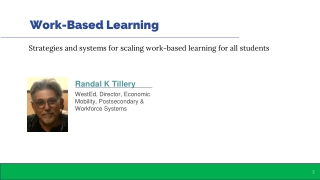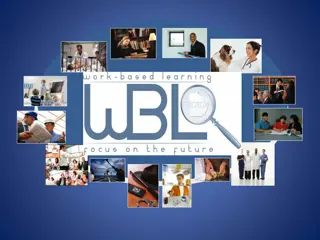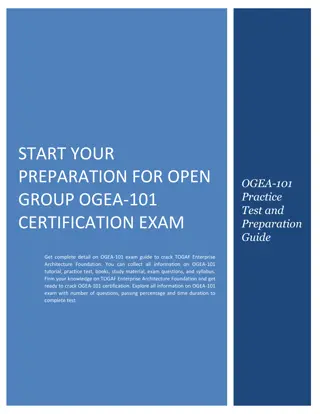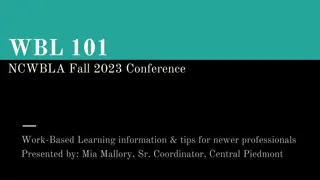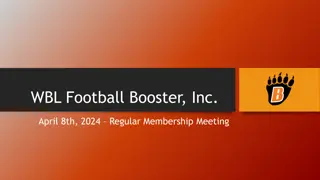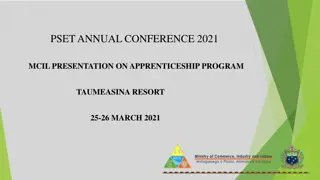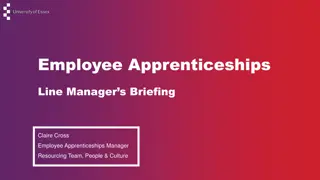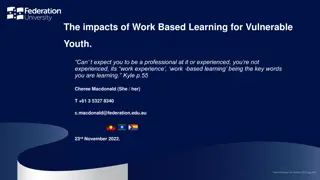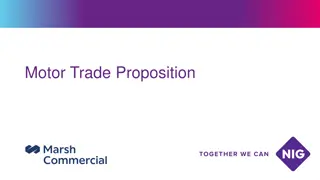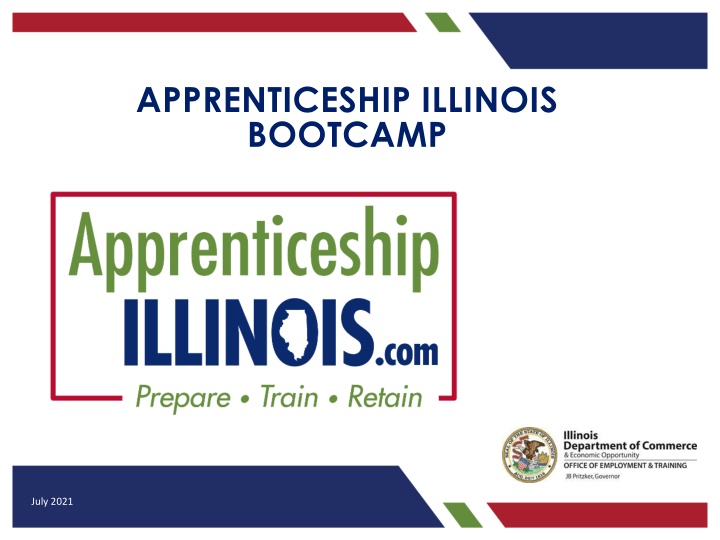
Comprehensive Guide to Work-Based Learning and Apprenticeships in Illinois
Explore the world of work-based learning and apprenticeships in Illinois through this detailed guide, including the value proposition, examples, frameworks, and differences between apprenticeships and internships. Discover the components of comprehensive WBL programs and the registered apprenticeship model, and gain insights into the benefits and distinctions of these unique training opportunities.
Download Presentation

Please find below an Image/Link to download the presentation.
The content on the website is provided AS IS for your information and personal use only. It may not be sold, licensed, or shared on other websites without obtaining consent from the author. If you encounter any issues during the download, it is possible that the publisher has removed the file from their server.
You are allowed to download the files provided on this website for personal or commercial use, subject to the condition that they are used lawfully. All files are the property of their respective owners.
The content on the website is provided AS IS for your information and personal use only. It may not be sold, licensed, or shared on other websites without obtaining consent from the author.
E N D
Presentation Transcript
APPRENTICESHIP ILLINOIS BOOTCAMP July 2021
APPRENTICESHIPS 101: WORK-BASED LEARNING AND THE VALUE PROPOSITION Dr. Justin Arnold Nate Carlson Bonnie Moore 2
COVERED IN THIS SESSION Work-Based Learning Outcomes for Employers & Apprentices Examples of using WIOA funding for WBL
WHAT IS WBL? Illinois Career Pathways Dictionary Learning that provides participants with work- based opportunities to practice and enhance the skills and knowledge gained in their program of study or industry training program, as well as to develop employability. 4
EXAMPLES OF WBL Customized Training Incumbent Worker Training On-the-Job Training Job Shadowing Clinical Experiences Cooperative Learning Mentorships Internships/Externships Apprenticeships 5
WBL FRAMEWORK: COMPONENTS OF COMPREHENSIVE WBL PROGRAMS 6
WHAT IS THE DIFFERENCE BETWEEN APPRENTICESHIPS & INTERNSHIPS? Duration Structure Mentorship Payment Certification College Credit 7
REGISTERED APPRENTICESHIP MODEL 8
APPRENTICESHIPS INTERNSHIPS Usually, short term 1-3 months Longer, 1-4 years No structured training & often focus on entry-level general work experience Structured training focusing on mastering specific skills an employer needs Do not always include mentorship Mentorship required Paid and continued career path w/employer May be unpaid and may not lead to a full-time job Nationally-recognized credential (Registered Apprenticeships) Typically, no credential May get college credit Will obtain debt-free college credit or employer provided training 9
APPRENTICESHIP ONBOARDING Long-term training model used to develop specific occupational skills and proficiencies Short-term series of steps to process and acclimate new employees 10
APPRENTICESHIP ON-THE-JOB TRAINING Training model that includes related classroom instruction, mentoring, and rewards. Training model that enhances an employee s knowledge, skills, and abilities. Learning and competencies may be linked to a process, equipment, or other business function, or a job using in-house standards. Learning and competencies are linked to a job (i.e., welder) using approved standards. A registered apprenticeship will conclude with the participant being a DOL-registered apprentice. May not result in a credential. 11
TYPES OF APPRENTICESHIPS Youth Apprenticeship Pre-Apprenticeship Non-Registered Apprenticeship Registered Apprenticeship (RA) 12
OUTCOMES FOR BOTH Employer ROI Skilled workforce Participants or Apprentices Living wage Career mobility Multiple industry credentials 13
EMPLOYERS INVESTMENT Time: Investment of time by HR, mentors, managers, other personnel for program setup and fostering learning of individuals Money: Investment of money through employees time (decreased productivity), classroom/courses, wages of individuals 14
WBL & EMPLOYER INVOLVEMENT Employers may commit to different levels of engagement based on their current needs and level of buy-in; apprenticeship and other WBL experiences are not mutually exclusive! 15
EMPLOYERS RETURN ON INVESTMENT Increased Retention Decreased turnover Morale meaningful work for mentors & other employees Skilled workforce Pipeline of new talent Tax Credits WIOA funds 16
BEST OUTCOMES FOR INDIVIDUALS Living wage with opportunity for career mobility Paid college credit, leading to AA or more Multiple industry recognized credentials Case managed Completion of program 17
QUALITY CONTROL Educate the employers Employers can meet deliverables and do the right thing Doing the bare minimum does not = a better ROI Retention of program kept in mind when developed Wage schedule Roles within programs 18
EXAMPLES OF USING WIOA FOR WBL & APPRENTICESHIPS Washington County Hospital Formula Funds for Apprenticeship Barnes Jewish Hospital (BJC)- Formula Funds for Paid Work Experience Bennie s Pizza Formula Funds for Paid Work Experience Soulcial Kitchen Formula & AEG Funds for Apprenticeship Auffenberg Automotive Group Formula Funds for Paid Work Experience Lansdowne Up Formula Funds for Paid Work Experience MAC Medical Formula Funds for Apprenticeship 19 Beno Gundlach Formula Funds for Apprenticeship


